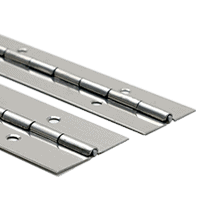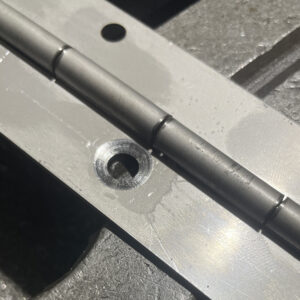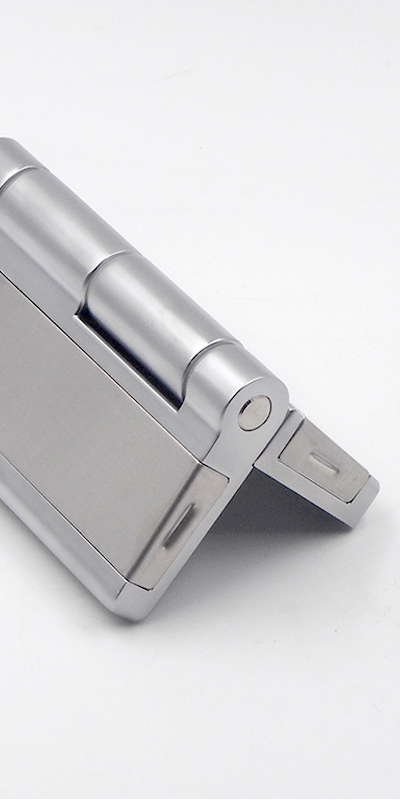Choosing between aluminum and steel continuous hinges depends on your specific application, environment, and performance expectations.
Choose aluminum continuous hinges over steel ones when weight savings, corrosion resistance, and aesthetic finish are priorities—especially in indoor, marine, and lightweight industrial applications. Aluminum is ideal for corrosion-prone areas or where hinge visibility and easy handling matter. Steel hinges are more suitable for high-load, high-impact environments.
Let’s explore when aluminum continuous hinges make more sense than steel hinges, based on function, durability, and use-case needs.
Weight Considerations
Aluminum is significantly lighter than steel, which makes it ideal for weight-sensitive applications.
Aluminum continuous hinges should be chosen when reducing weight is a top priority, especially in transport and portable equipment.
Why Weight Matters
Aluminum has a density of ~2.7 g/cm³ versus ~7.85 g/cm³ for steel—making it nearly three times lighter. In applications such as aerospace equipment, portable access covers, or enclosures for sensitive machinery, aluminum offers clear handling and logistical advantages.
| Material | Density (g/cm³) | Application Benefit |
|---|---|---|
| Aluminum | 2.7 | Lightweight, easier installation |
| Steel | 7.85 | High strength, heavy-duty use |
Less weight also means reduced strain on structural mounts, hinges, and assembly support over time, extending lifespan and lowering maintenance costs.
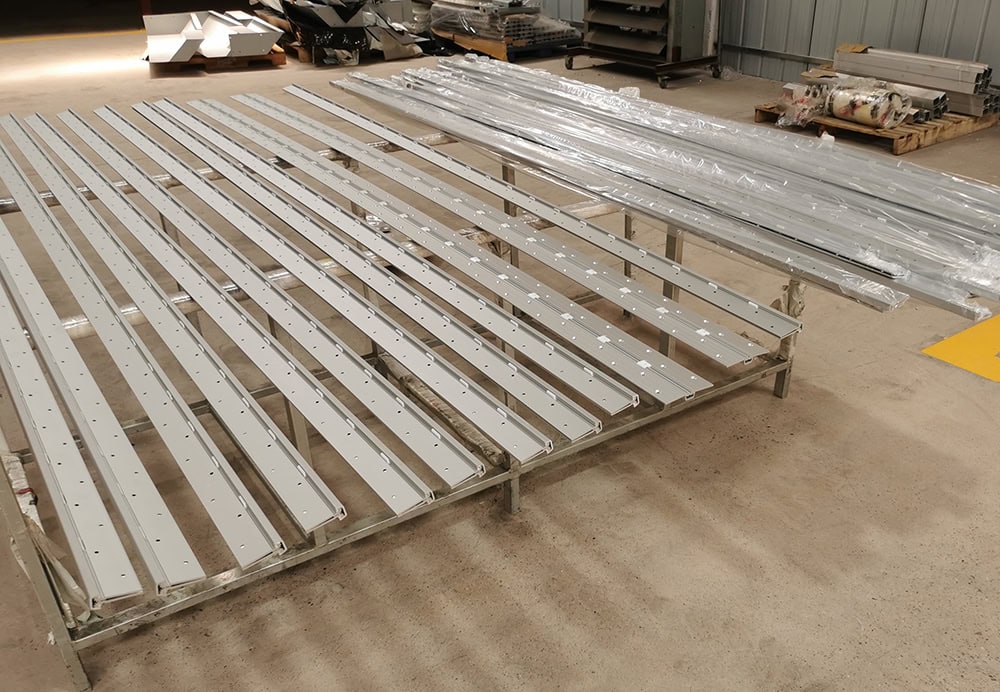
Corrosion Resistance
Aluminum hinges perform better in high-humidity and corrosive environments compared to untreated steel.
Use aluminum continuous hinges in marine, coastal, and high-humidity environments due to their natural corrosion resistance.
Natural Oxidation Layer
Aluminum naturally forms a protective oxide layer that defends against rust. In environments where steel might quickly corrode—such as packaging equipment rooms or food processing plants—aluminum outperforms unless the steel is specially treated.
Some practical use-cases include:
-
Outdoor control panels near marine areas
-
Constant temperature or humidity test chambers
Aluminum’s performance remains stable without additional coatings, which reduces ongoing maintenance needs.
Aesthetic and Finish
Aluminum hinges offer a cleaner and more modern look with a range of surface treatments.
Choose aluminum when hinge appearance is important—such as in visible panels, display cabinets, or customer-facing enclosures.
Anodizing and Finishes
Aluminum hinges can be anodized, brushed, or powder-coated, making them suitable for display cases, medical equipment, or cabinets for advanced automation systems.
Steel may rust or lose its finish over time, especially with repeated use or exposure. If your hinge is visible to customers or needs to reflect a premium product aesthetic, aluminum’s versatility in appearance offers a major benefit.
Additionally, consistent surface finishing supports industrial branding and product uniformity.
Load-Bearing Requirements
Steel provides higher load support and tensile strength than aluminum.
Choose steel continuous hinges for heavy-duty or high-load applications such as doors, safes, or armored boxes.
Load Comparison
Aluminum isn’t weak, but steel has superior tensile and yield strength. In industries requiring armored doors, blast-resistant boxes, or doors that support industrial motors, steel is the safer choice.
| Material | Tensile Strength (MPa) | Typical Use Case |
|---|---|---|
| Aluminum | ~310 | Light-duty doors and lids |
| Steel | ~400–550 | Heavy-duty or security doors |
Use aluminum only in applications where the load and daily usage cycles are light or moderate.
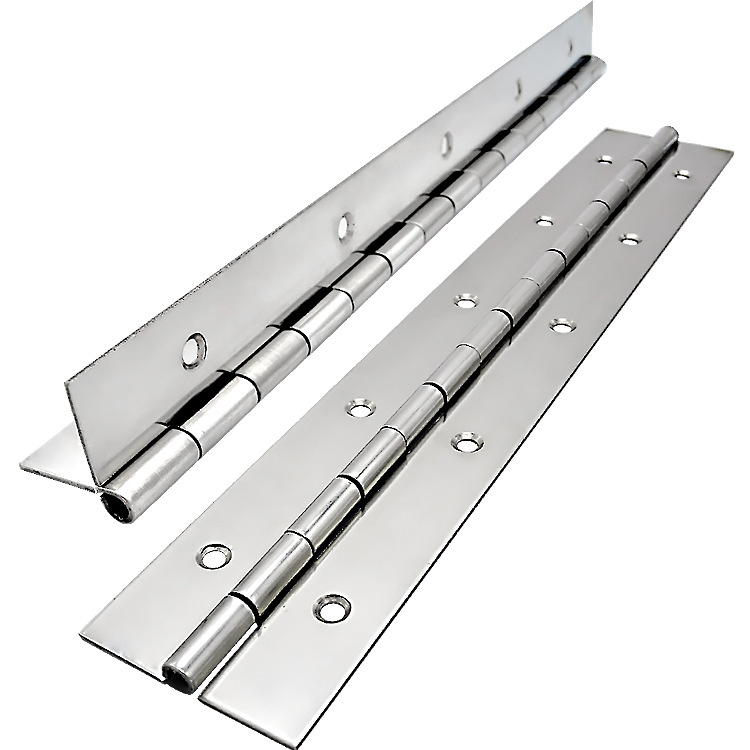
Cost and Budgeting
Aluminum hinges are often more cost-effective in manufacturing and installation.
Choose aluminum hinges when balancing cost, performance, and corrosion resistance in budget-conscious projects.
Total Cost of Ownership
Aluminum is cheaper to machine and transport due to its lower density. This can be a major factor in mass-produced equipment, where dozens of hinges may be used per unit.
Other cost benefits include:
-
Reduced shipping weight
-
Lower maintenance in corrosive environments
-
Fewer finishing treatments required
While steel might provide better mechanical durability, the long-term costs of corrosion management and installation often make aluminum the more economical choice.
Electrical and Thermal Conductivity
Aluminum is more thermally and electrically conductive than steel.
In electronic enclosures or temperature-regulated systems, aluminum continuous hinges offer better heat dissipation and EMI shielding.
Application Example
Aluminum’s conductivity supports heat dispersion in thermal test chambers and enclosures for high-speed labeling or packaging machinery. It also performs well where electrostatic discharge (ESD) or electromagnetic interference (EMI) is a concern.
In areas with sensitive sensors or printed circuit boards, aluminum hinges reduce thermal stress and enhance overall electrical safety.
Steel may require grounding and special treatments to meet the same safety standards.
Customizability and Design Flexibility
Aluminum is easier to cut, shape, and customize.
Choose aluminum when you need complex profiles, custom lengths, or aesthetic surface designs in continuous hinges.
CNC Machining Advantage
Aluminum machines more easily than steel. For equipment manufacturers that need quick turnaround on hinge modifications—like adjusting hole placements or branding parts—aluminum enables faster, cleaner results.
For OEM production of specialized machinery such as a medical dispenser or compact automation system, aluminum’s customizability helps meet diverse product design requirements without compromising aesthetics or strength.
Laser engraving and anodizing also make logo integration straightforward.
Environmental and Recycling Benefits
Aluminum is more eco-friendly and recyclable than steel.
Select aluminum continuous hinges in projects requiring sustainable materials or recyclability in end-of-life cycles.
Sustainable Material
Aluminum can be recycled without degradation in quality. That makes it ideal for companies pursuing sustainability certifications or greener supply chains.
In contrast, steel recycling is energy-intensive and may involve loss of structural integrity.
If your project must comply with eco-labeling or environmental standards, aluminum provides a clear compliance advantage.
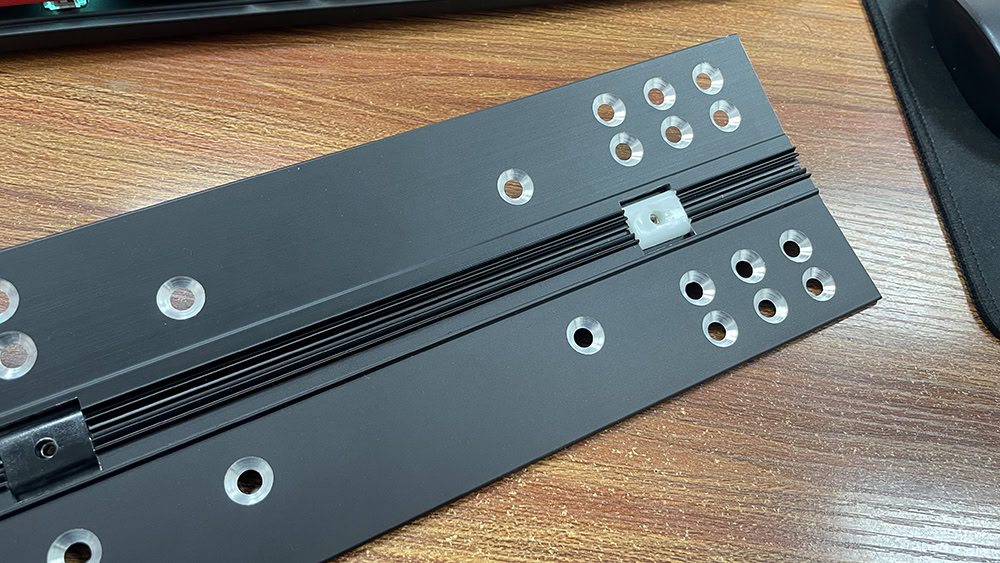
Applications with Low Friction Needs
Aluminum offers better wear properties when friction and repeated movement are minimal.
Use aluminum hinges in light doors, lids, and panels where minimal friction or movement is required.
Friction & Motion
For infrequently opened panels or maintenance access doors—such as on label printers or control boxes—aluminum hinges offer sufficient support without wear concerns.
However, in high-frequency motion zones (e.g., warehouse loading doors), steel is better due to its hardness and abrasion resistance.
Aluminum is ideal for light-to-moderate use scenarios where quiet operation and appearance matter more than durability under stress.
Non-Magnetic Requirements
Aluminum is non-magnetic, making it suitable for certain electrical and medical environments.
Choose aluminum continuous hinges in applications where magnetic interference must be avoided—such as MRI rooms or sensitive electronics.
Why Non-Magnetic Matters
In facilities where magnetic fields could disrupt operations—like diagnostic labs or barcode scanning stations—non-magnetic aluminum hinges prevent interference and enhance operational stability.
Even in automation and labeling systems, where sensors are sensitive to metal presence, aluminum is a safer and cleaner option.
Stainless steel may be partially magnetic, depending on its grade, which limits its use in high-sensitivity zones.
Conclusion
Choose aluminum continuous hinges when corrosion resistance, weight savings, and customizability are more important than extreme load-bearing or heavy-duty durability.

